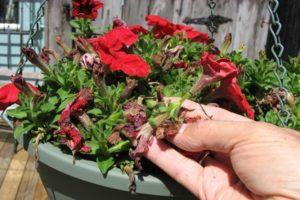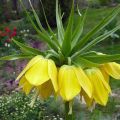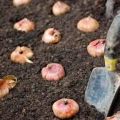When to dig up gladioli bulbs, terms and rules of storage, preparation for winter
Gladioli are a popular garden plant that is often grown in suburban areas. It is used to decorate flower beds and mixborders. In order for the plant to grow normally and please with lush flowering, it must be properly looked after. Novice flower growers are often interested in digging out garden gladioli. Experts advise to carry out this procedure in the fall.
When to dig up gladioli for the winter?
In what month is it recommended to dig up the plant? Bulbous crops should be removed from the ground after the flowering period. Therefore, autumn belongs to the optimal time for harvesting gladioli. However, a specific period must be chosen taking into account the climatic conditions of the region.
It is recommended to choose the optimal period for digging. If the bulbs are harvested too early, the plant may not germinate the next season, or it may have trouble flowering. This is due to the fact that the tubers did not have time to gain strength for wintering and flowering. If you keep gladioli in the ground for too long, they freeze. In such a situation, there is a risk of plant death.
To calculate the optimal period for digging out a crop, you should pay attention to the condition of the ground part of the plant. It should turn yellow and dry completely. A change in leaf color indicates that the flower does not produce chlorophyll. This means that he stopped his development.
The exact harvest time depends on the climate and weather. Usually, autumn harvesting is done 30-50 days after the end of flowering. In this case, it is worth considering regional characteristics. In the south, where there is no frost, the bulbs do not need to be dug out.
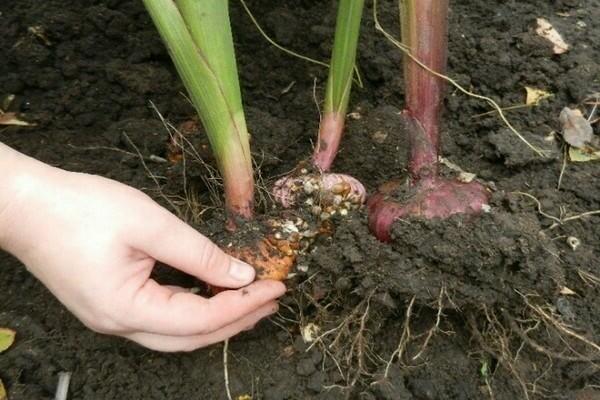
Only early varieties of gladioli are grown in Siberia. In this case, the bulbs do not have time to ripen. Therefore, they are dug up immediately after flowering and placed in pots with soil for a month. The middle zone is characterized by a temperate climate. In such conditions, gladioli need to be dug up in the second half of September.
How to properly harvest the bulbs?
Before digging up the plant with pruners or garden shears, trim the stem and foliage. In this case, it is recommended to leave small hemp. To dig up the plant, it is recommended to stick a pitchfork into the ground and carefully lift a clod of earth with bulbs.
Then they need to be put on a film, and the bulbs and children should be pulled out of the dried soil. It is necessary to cut the roots from them.After collecting the tubers, diseased specimens will have to be discarded.
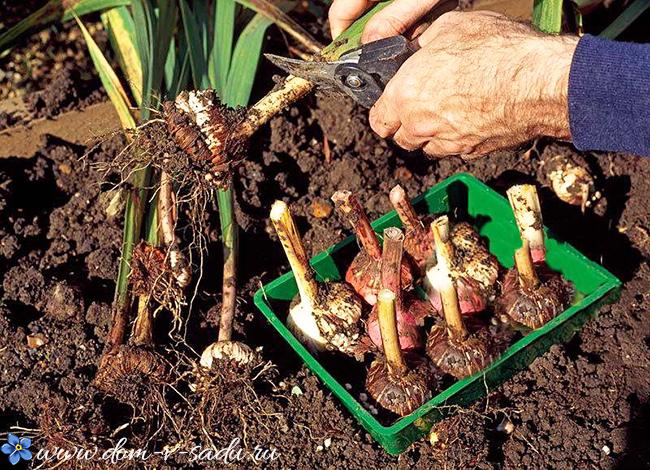
How to prepare gladiolus bulbs for winter storage?
It is recommended to disinfect the bulbs before harvesting them for storage. This will help avoid the development of dangerous diseases and preserve the planting material until spring.
Processing the bulbs after digging
Rot is considered the main danger to bulbs. To avoid its appearance, in preparation for winter, planting material should be disinfected. To begin with, it is recommended to rinse it in running water, and then soak it in a solution of Fundazol or Fitosporin.
Drying the bulbs
After disinfection, the bulbs and children should be dried. To do this, it is recommended to keep them in a room with a temperature of + 29-34 degrees for 2 weeks. The last 2-3 days, the bulbs are dried at a temperature of + 35-38 degrees. It is advisable to use a fan.
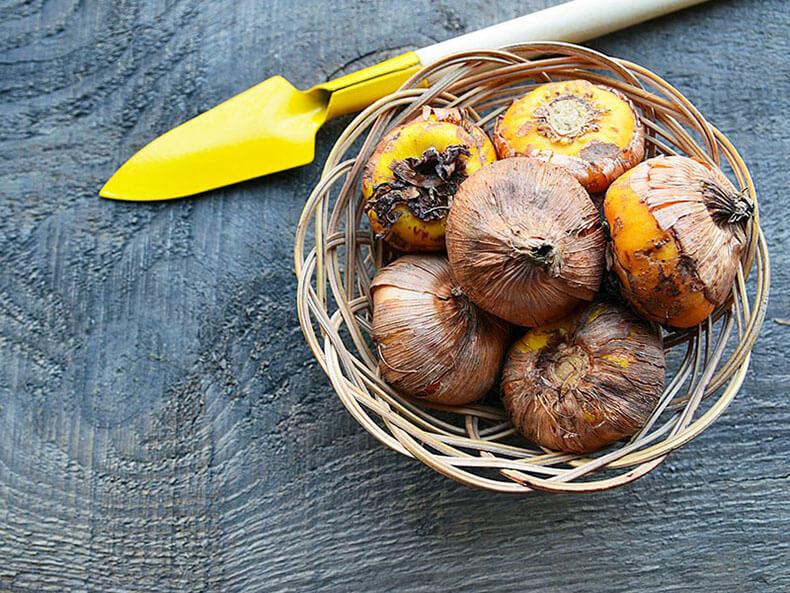
How to store bulbs in winter
It is best to store bulbs in a basement or cellar. They are also allowed to be kept in a city apartment. However, it is important to provide the plant with suitable conditions.
In the basement or cellar
When storing tubers in the basement, place them away from vegetables and fruits. It is best to place the bulbs in a container with a mesh bottom. This will provide adequate ventilation and fresh air flow. During the wintering process, it is worth constantly removing spoiled and diseased specimens.
You should not place a box with planting material on the floor - it is much better to use a shelf or rack for this purpose.
In the apartment
Before storing the bulbs, they need to be disinfected. After that, it is worth choosing the right place for the tubers. It is best to keep the plant in the refrigerator or on the balcony. In this case, you will have to provide a constant flow of fresh air.
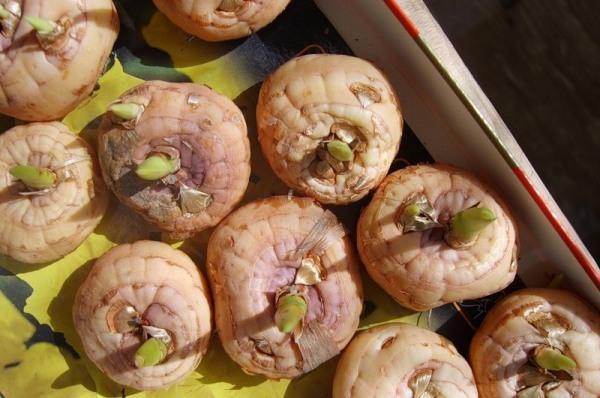
When storing bulbs at home, they can be taken out into the stairwell. In winter, the temperature is quite cool there. There are also several non-standard methods suitable for an apartment:
- in the bathroom, near pipes with cold water - while the plant needs protection from moisture;
- between window frames - this can be done if non-plastic windows are installed;
- in an unheated storage room - it is important to ensure the optimal temperature regime.
On the balcony
The bulbs are often stored on the balcony. In this case, it is important to monitor the temperature indicators. If they are below the norm, it is recommended to cover the boxes with tubers with a blanket or use other materials. This is not required on insulated loggias. In this case, the temperature regime will still have to be controlled so that the tubers do not die and germinate.
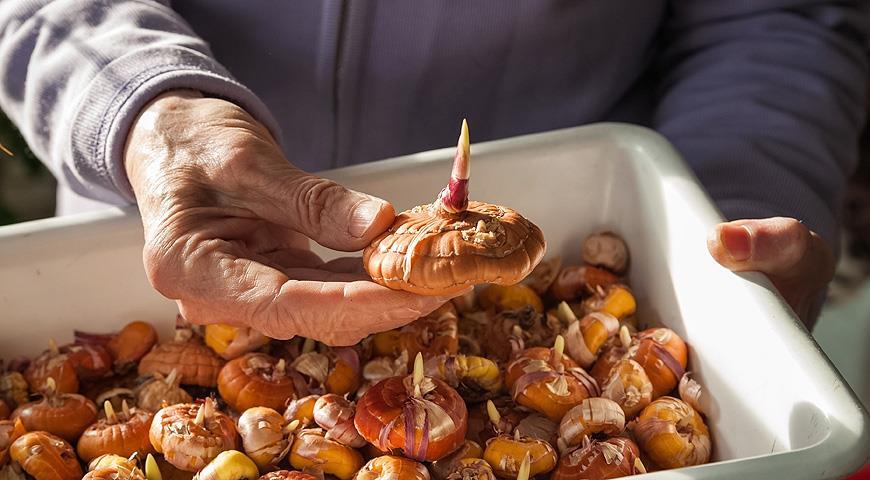
On the balcony, planting material should be kept in a foam box. Moreover, it must have openings for the flow of fresh air. To control normal temperature readings, you should definitely install a thermometer above the box. During frosts, the container should be insulated.
Cold storage
Gladiolus bulbs winter well in the refrigerator. This option is suitable for a small number of tubers. It is important to take into account that moisture can accumulate in the refrigerator. Therefore, it is recommended to wrap each onion in paper. Keep the planting material on the lowest shelf.
In late February or early March, gladioli are recommended to be removed and dried. It is during this period that they absorb the maximum amount of moisture. After drying, the tubers must be wrapped in paper again and placed on a shelf with a low temperature. However, it should not be negative. Otherwise, gladioli will freeze and not sprout.
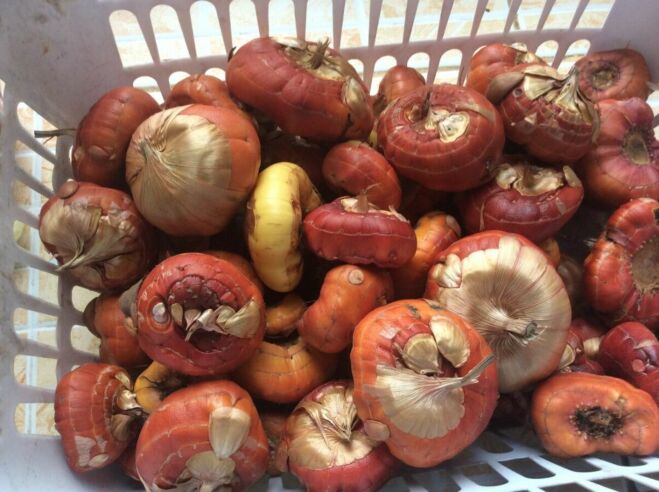
Possible complications
To avoid negative consequences, it is necessary to inspect the planting material once a month. The following problems indicate the development of complications:
- Formation of gray mold - the cause is high humidity.In such a situation, it is recommended to dry the tubers and wrap them in new paper.
- Thrips attacks - in case of pest attacks, it is recommended to remove the affected tubers. The remaining bulbs should be treated with Hom. In the absence of suitable remedies, the bulbs must be placed in an airtight container and put in cotton wool soaked in alcohol. This will lead to the death of the pests. Then the tubers need to be dried. The procedure is carried out with an interval of 4 days.
Results of correct storage
Subject to the storage rules, it will be possible to obtain high-quality planting material. When planted in the ground, it will germinate and please with rapid growth and abundant flowering. To achieve good results, it is necessary to systematically inspect the tubers and remove rotten specimens.
Digging and storing gladioli has a number of features. To succeed in growing a crop, it is important to provide the plant with optimal conditions during the winter season. In this case, it is necessary to systematically inspect the tubers and get rid of spoiled bulbs.
